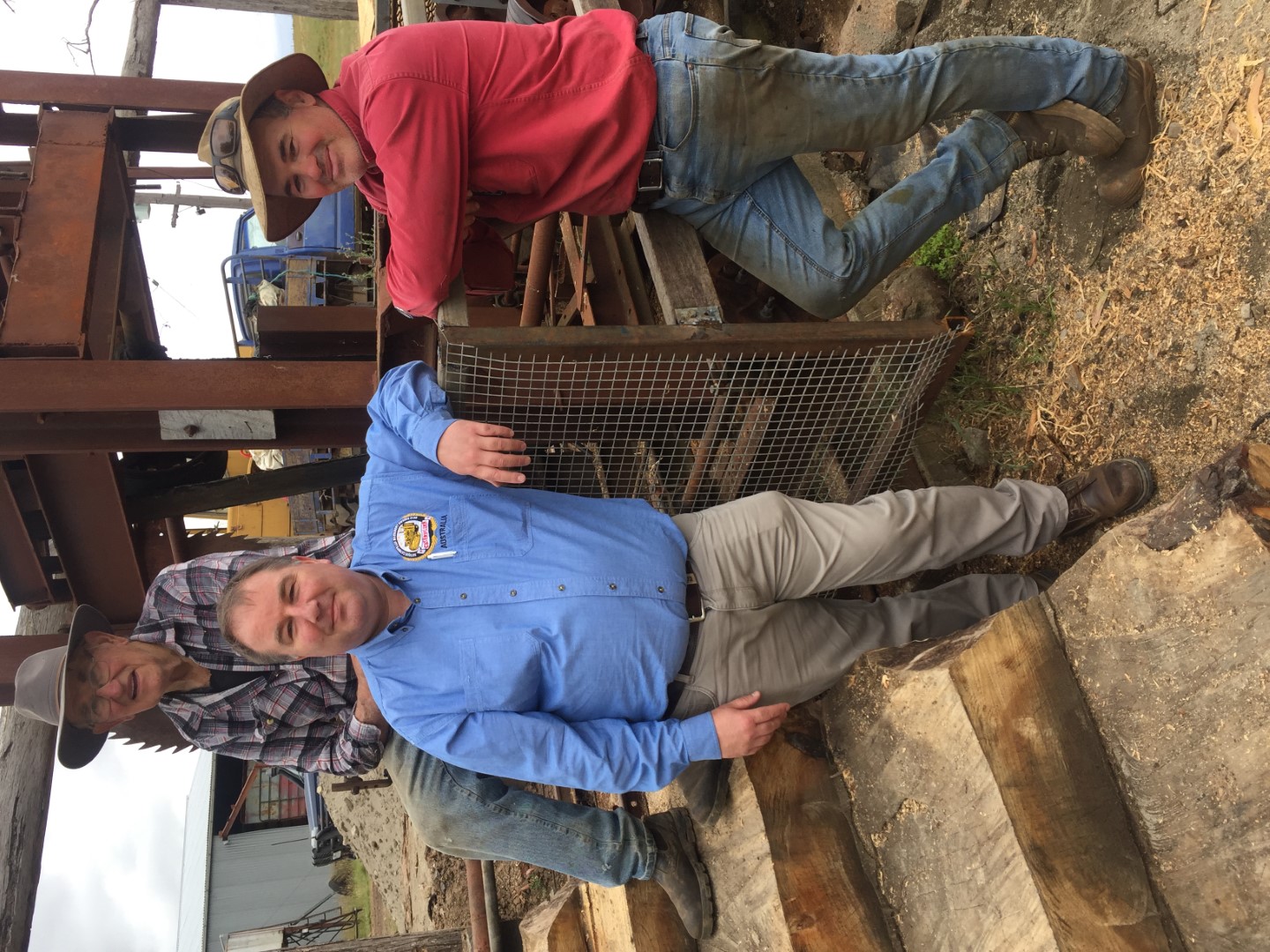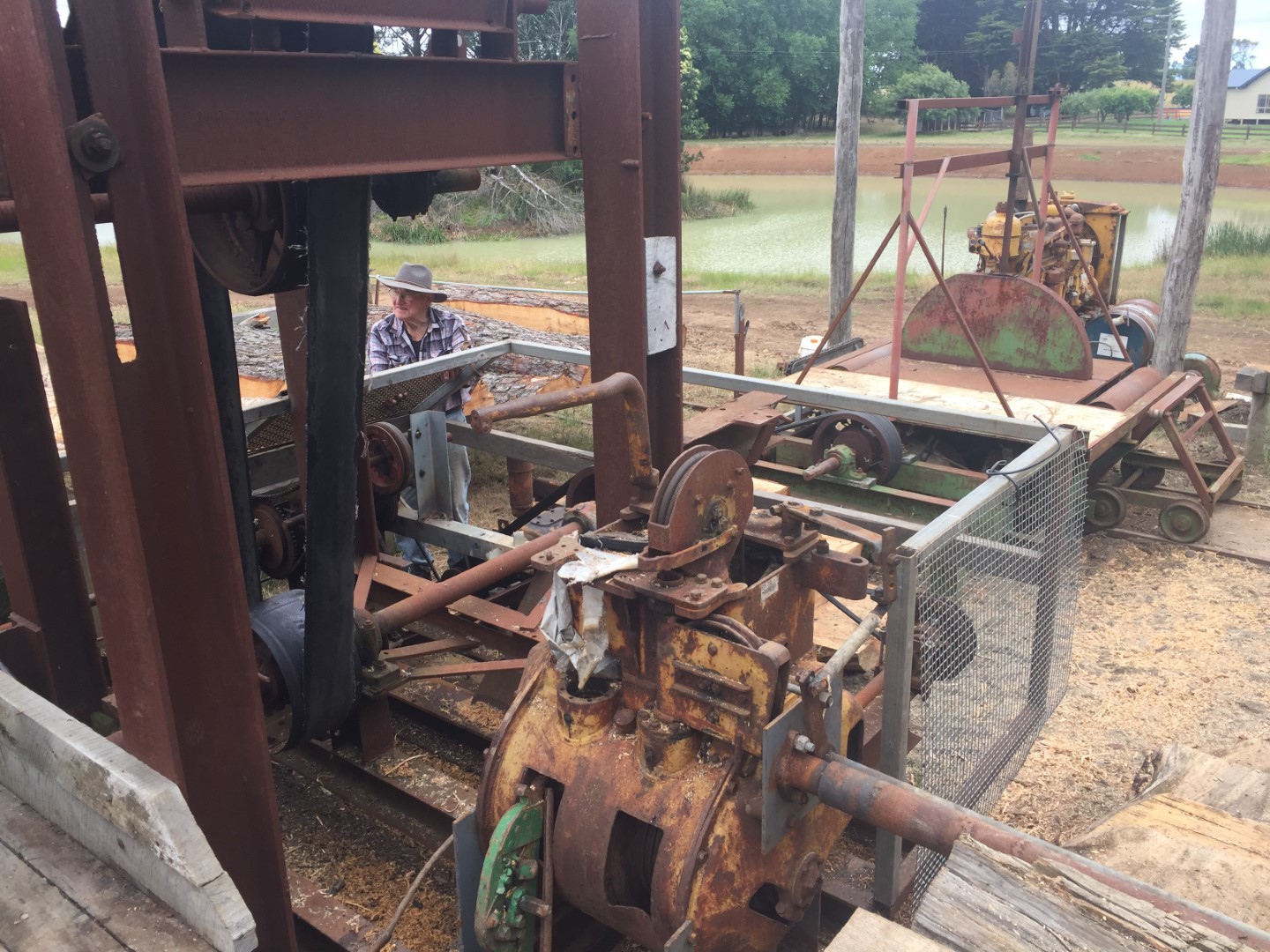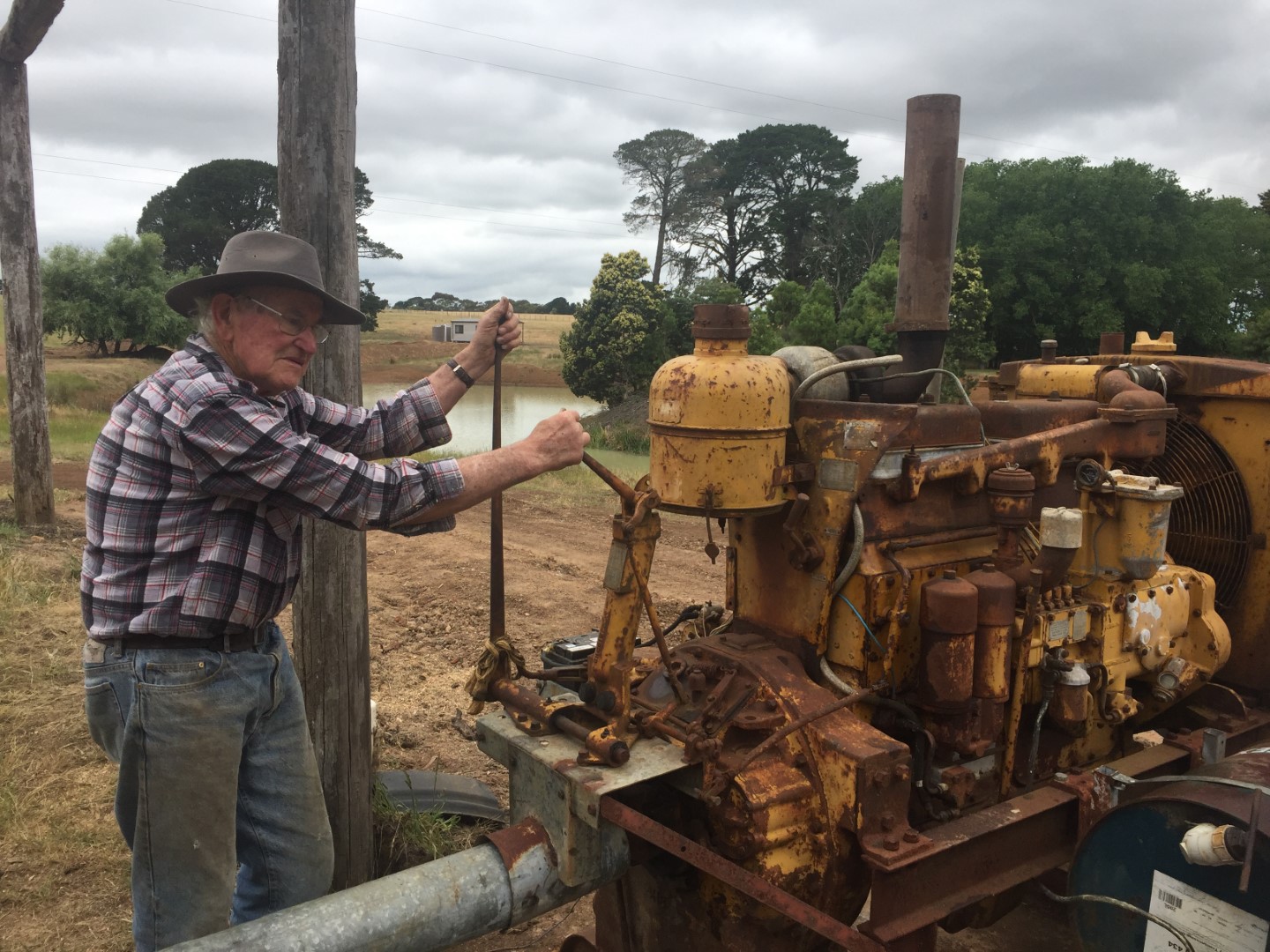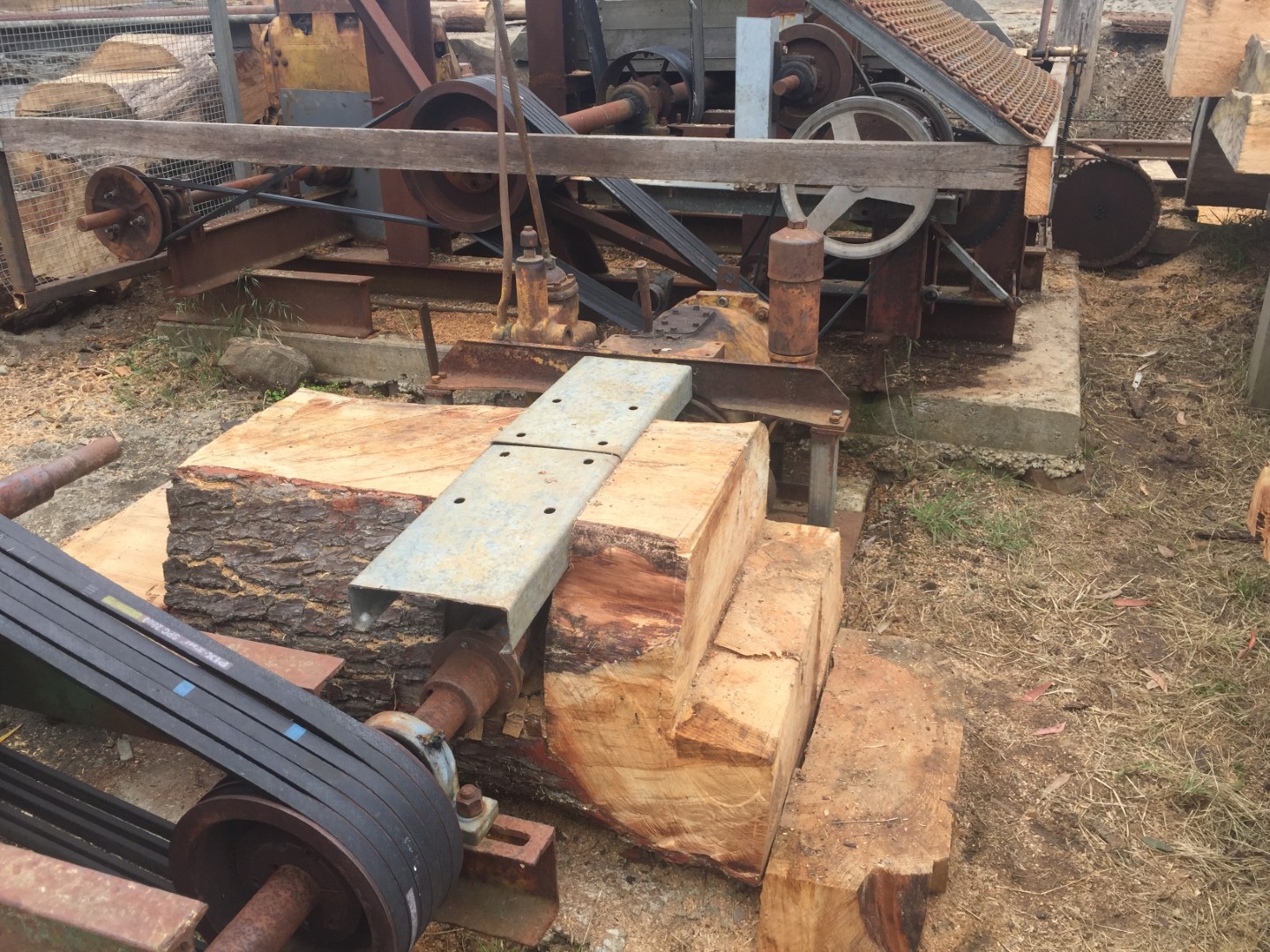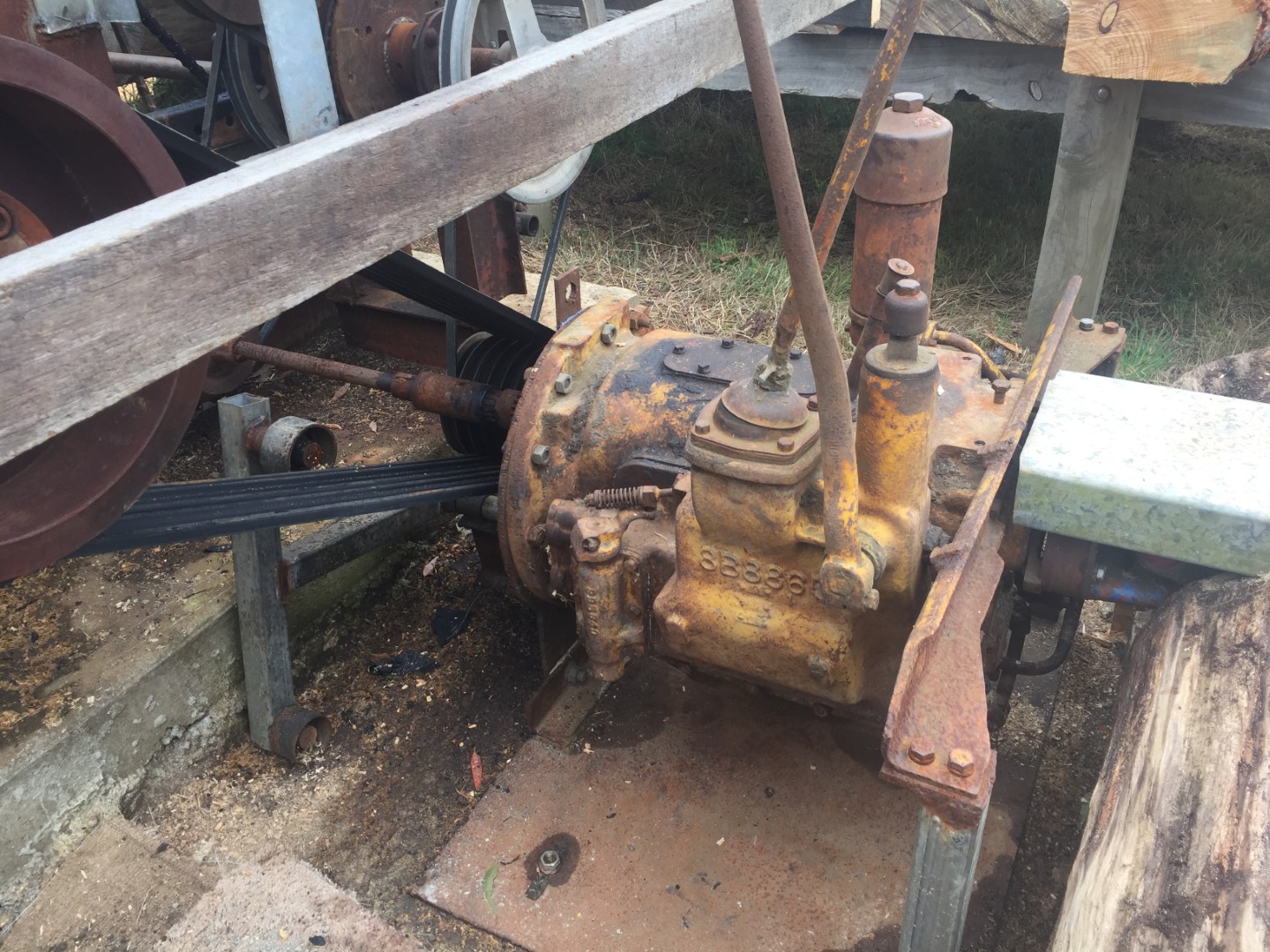Born in Orbost, East Gippsland on 13th December 1936, Alexander McRae starts telling his story with a familiar statement for people of his generation. “I started life having had very little to do with machinery, horses were everything.” Such was this era of farming, clearing and logging. But it didn’t take long for Alex to become intrigued with the power of what he calls the ‘mighty’ machines, referring to track-type tractors with bulldozer attachments of the day. Intrigued and impressed he may have been, but these early International tractors also amazed Alex with how much time it took each morning to fix breakages ready for that days’ work!
Introduced to the Caterpillar brand while operating a D6 9U for Crowe Bros. sawmill in Buchan, the reliability of this tractor cemented Alex’s belief in the mechanisation of logging in the area and a lifelong appreciation for the Caterpillar brand. It wasn’t until the early sixties that Alex was finally able to purchase his first Cat dozer. Recounting fond memories of being introduced to Gordon Hellsten of William Adams, the outcome of this meeting resulted in Alex becoming the proud owner of a Cat D4 30A five roller dozer with an angle blade and Hyster winch with 3000 hours on it. “I took it to 17,000 hours and did the work one would expect of a D7” remembers Alex, and he has the photos to prove it! “I look back with fond memories of the help that Gordon was to me over many years.” Says Alex of William Adams legend Gordon Hellsten.
Several Cat dozers later, jobs that came and went and a Cat 3208 V8 powered International AB184 truck carting ‘single rider’ logs, Alex eventually consolidated and sold up in East Gippsland and by 1989 had purchased a 3000 acre grazing property at Hawkesdale in Western Victoria. But this was not the end of his relationship with Caterpillar. After finding so much work on the new property requiring a dozer, contact was made with former William Adams salesman and long time friend Roger Horne who sourced a D6D for Alex, “This revived my addiction to Caterpillar” says Alex. Also inspired by the collection of Cat’s owned by Cleary Bros. at Port Kembla, N.S.W. Alex thought that this would be an interesting hobby for him in old age, so he started collecting old Cat tractors and joined the Antique Caterpillar Machinery Owners Club (ACMOC).
Now known for his love of old Caterpillar tractors in the district, word got through to Alex of an old dozer that belonged to JR Brown, in a yard with other machinery near Nullawarre, 35 km East of Warrnambool. Not one to miss an opportunity to add to his collection, the subsequent visit revealed a 1961 D7D 17A1838 dozer that had sat covered with fire debris under a tree as a result of the 1983 Ash Wednesday fires.
Having now purchased the tractor as is, Alex and his son Richard decided to try and get it running, but the pilot motor was crook. They brought the pilot motor home and used a donor motor for parts to put a working pilot motor together. Surprisingly even with a weak spark, once refitted the pilot (starting) motor fired up straight away. The main diesel motor despite having been sitting for around for nearly 20 years just needed an oil change and a temporary 4 gallon drum as a fuel tank before, once warmed up it also fired to life. “It didn’t miss a beat, so we opened up the throttle and tracked it out about a mile out under its own power” proudly reports Alex.
The dozer once back at the farm was used to push up fill and clean out a dam, before some years later frustrated with the lack of power for his tractor driven finishing saw bench, Alex hit on an idea true to his bush ingenuity. The dozer may had seen better days and had donated some parts to another 17A Alex had sold, but the powertrain was sound, so why not repower his existing saw bench with the D7’s 4 cylinder 831 cu. in. 140Hp D339 engine?
But this was no ordinary tractor driven saw bench! Now aged in his seventies, Alex set about building a full working sawmill, complete with breaking down saw, finishing saw, powered log crane and log feed trolley. All of the power is delivered from the D339 through the finishing saw bench, using truck drive shafts, then into the D7’s gear box, so direction and speed can be managed into the break down saw and using the D7’s cable Power Control Unit (PCU) that once powered the dozer blade to now power the log crane. The insertion of the D7 transmission required Alex to grind down the rear output bevel gear pinion to make an adapter to drive the break down bench input, while retaining the traditional PTO output to drive the now remotely located PCU just as it would have been in the original dozer. Slip clutches for the trolley direction controls include Toyota Landcruiser brake rotors and handmade friction plates, evolving from early slipping belts designs that Alex reports were a bit hard to control. Multiple drive shafts deliver power between all the elements of the mill, even including a sawdust blower. Access around the mill includes logs with carved steps over rotating drive shafts and across various ground levels for an extra piece of authenticity.
Keen to give us a working demonstration, with the simple opening of the fuel tap and a flick of a switch the electric start petrol pilot starting motor kicks into life straight away. For the uninitiated, a traditional electric starter motor cranks a 2 cylinder petrol engine mounted on the left side of the main diesel engine which in turn cranks and warms up the main diesel engine, ensuring positive lubrication and adequate pre-combustion, such that the when the decompressor is closed and throttle opened the main engine can fire. This was a proven method for starting diesel engines especially in cold climates and permitted a much longer cranking time than could ever had been achieved with electric starters of the day. The clutch mechanism between the pilot and main motor, must have seen better days, requiring Alex to forcibly hold it engaged, with a foot long piece of pipe on the lever, an action not lost even today on owners of old pilot start tractors.
With a couple of puffs of black smoke, the D339 bursts into life, and immediately the sweet distinctive sound of the turbocharged engine fills the air, with a smell of diesel fumes to heighten the senses, oh what a treat. Only a couple of years earlier Cat had introduced the turbocharger to the 17A range, boosting its power and forever linking the Cat D7 with that distinctive engine note famous to this day.
Throwing the main clutch, oil type on the 17A which was another Cat feature, a myriad of shafts, belts, pulleys and saw blades spring into life, in what can only be described as a symphony of mechanical music, amazingly sounding all in tune. With Alex at the controls of the Landcruiser based trolley feed clutches, the log is fed slowly and steadily into the breakdown saw, just as enthusiastically as it would have been on any working sawmill of the day. A stern look of concentration makes way to a wry smile of pride, that Alex is doing something he loves with repurposed and reinvented components just like he would have done in earlier times like any true bush mechanic. That high pitched sound of the log being converted into usable timber echoing across the farm.
With some pre-cut logs, Alex & Richard produce some fine dimensional timber on the finishing saw, which is a two man job, before stacking ready for air drying. Today we were using some logs from pines cut down on the farm and being put to good use, but Alex admits this timber is not a patch on the native Mountain Ash and other hardwood species he once logged and milled while working the bush in East Gippsland.
Never one to sit still, Alex still has more to do, not least is mill the timber for purlins so he can put a roof over the entire mill, and oh yes perhaps an extra guard or two over some of those many moving parts! It was certainly a pleasure to visit Alex, and enjoy the hospitality of his wife Jenni, along with son Richard who is still working the farm today.
Listening to Alex talk about his life experiences, pulling photos from endless albums and boxes, every time being able to immediately recount who was who in the image, what they were doing and where they were from, was a pleasure I will never forget and it reminds you how important these pioneers of his generation like Alex were to the success of our country and how critical it is that their stories are told.



